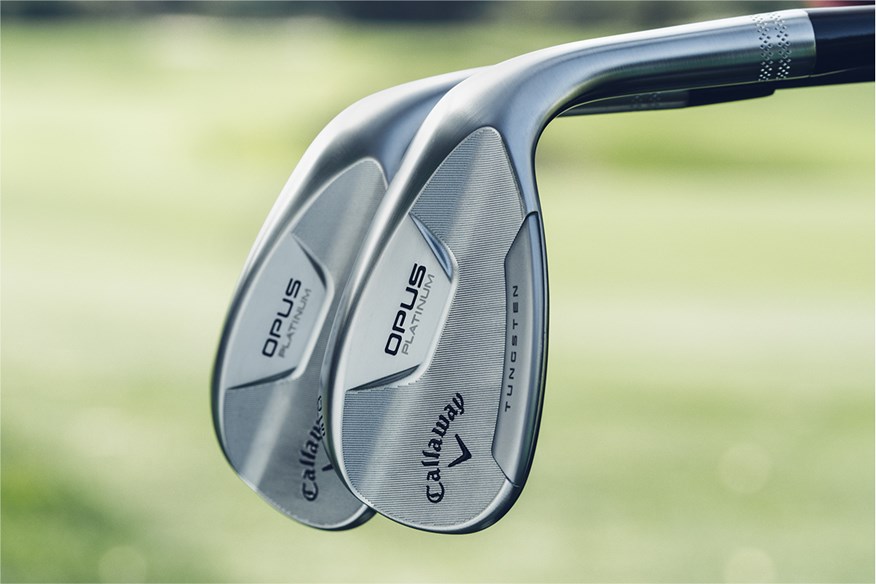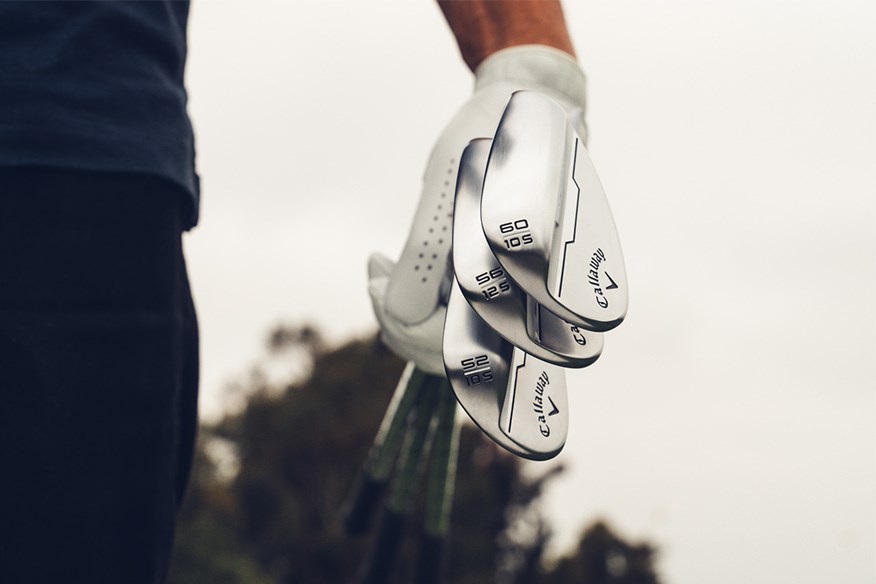Callaway Opus and Opus Platinum Wedges: Today’s Golfer shows you everything you need to know
Last updated:
Callaway say these wedges are the peak of their engineering vision. We take a deep dive into the new Opus models so you can learn everything you need to know
Every golf club has a story behind it. Opus is no exception. From initial concept through to testing to final launch and release of the product, the hands and minds that touch the equipment all help to create those stories.
There are, however, connecting threads within models, within brands, and within generations. The Opus and Opus Platinum wedges are the culmination of years of research and development, with a name to reflect just that.
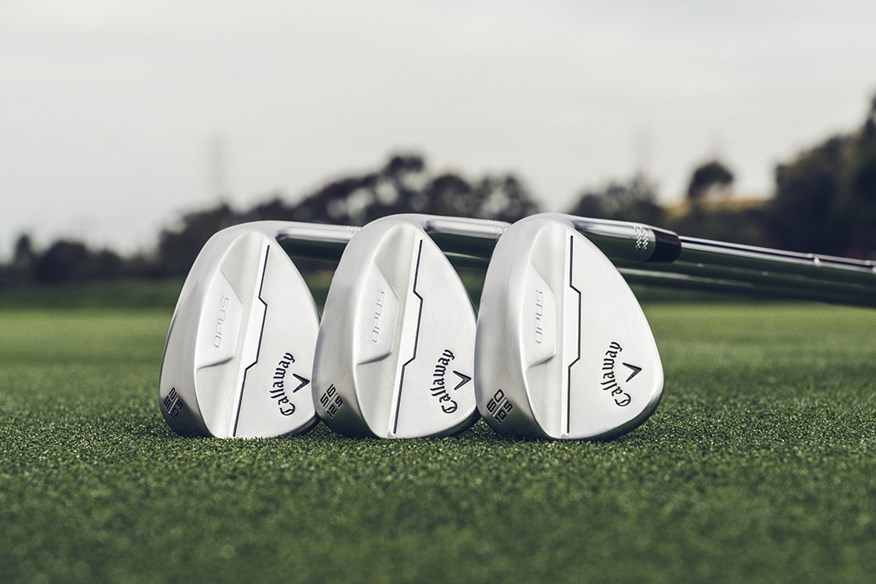
Latin for ‘a result of work’, the word Opus has been picked specifically to conjure up thoughts of classical art and music from the likes of Beethoven, da Vinci, or Bach – indeed the plural of the word is, in fact, Opera, a music form often mooted when considering timeless art. For Callaway Golf, this could come to be considered their Magnum Opus – the pinnacle of their work.
So how has Callaway justified the bold name of this product? Let’s explore the story of these wedges, and what separates the two models.
Opus wedges on tour
The first thing Callaway will talk about is tour validation of the design. Rather than create a wedge before sending it to tour for some final tweaking and remarks, Callaway has built this from the ground up with player involvement. This makes sense; releasing a product without involving any of the best players on tour, in the form of Callaway ambassadors, would seem unorthodox to most.
This year has been turned up a notch though, with more staff players than ever before used to validate the shape and design of the new wedges. Initially known internally as ‘S6’ (the sixth shape that the engineers had created), the prototypes of the Opus wedges started being used by players up to 18 months ago.
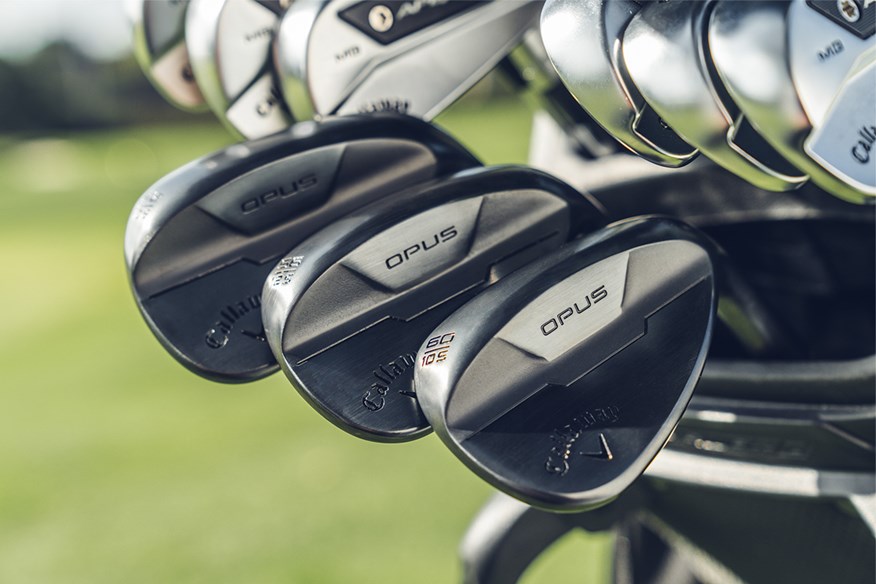
Jon Rahm carried them during the 2023 Open Championship, PGA Tour Championship, and Ryder Cup, and Xander Schauffele and Yuka Saso both won Majors in 2024 while playing an Opus model.
So Callaway had the approval of the shape from their tour staff, but looks alone can’t make these players change what they earn their living with so there must be more to it than that.
Spin it to win it
Across both the Opus and Opus Platinum models, this wedge line boasts Spin Gen Face Technology. Spin Gen technology can be broken down into three components, all working together to provide a tighter performance around the greens.
The first change has been with groove design. Callaway still uses what it describes as the most aggressive grooves in golf but in the Opus they’ve decreased the distance between each groove, allowing for more of them on the face. This means you’ll have more grooves in contact with the ball, helping to improve spin from any lie.
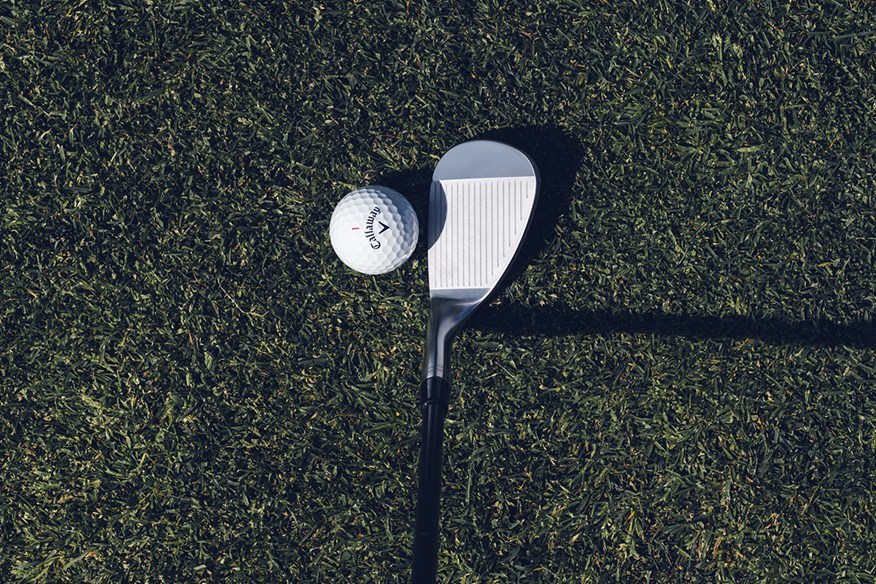
The second update with the face technology is a high-intensity blast material containing the mineral quartz. The material allows Callaway to blast a deeper roughness onto the face to provide more friction, and therefore spin, regardless of the loft presented.
The final piece of the puzzle is not necessarily a new technology for the company but the return is always welcome. Micro-grooves, shallow cut lines in between the larger grooves, have been angularly placed to help increase the grab of the wedge against the ball even when opening the face.
All these improvements together have helped Callaway increase spin across the spectrum of shots. In particular, Callaway would like to focus on shots from the rough as well as wet conditions, with increases of 500 and 1200 rpm, respectively.
You’ll also see 5º lower launch out the rough and the wet, helping you more consistently predict how the ball should come out of these conditions. Callaway has taken this feedback request from its staff seriously, even going so far as to grow their own grass for simulating conditions while in laboratory-controlled environments.
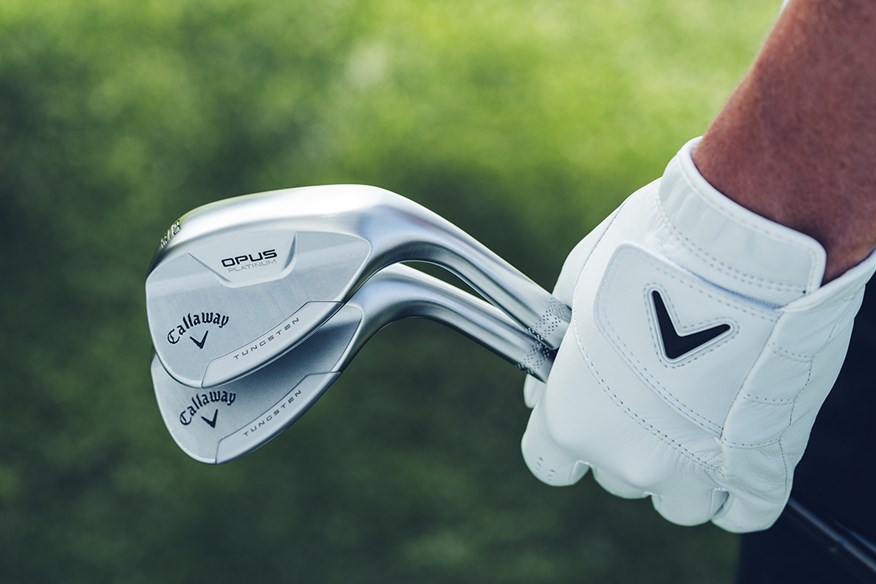
Opus Platinum: Breaking the Mold
We’ve referenced the two different options, in the Opus and Opus Platinum, but what separates these heads?
Both models feature the tour validation and Spin Gen tech that we’ve already mentioned but Platinum is where Callaway really feels they can separate themselves from the rest of the field.
You’ll notice on the back of the Platinum wedge is a smooth bar with the word ‘tungsten’ engraved into it. For those not already aware of this metal, tungsten is a high-density metal, great for adding additional weight into desired spots to give Center of Gravity a helping hand. Centre of Gravity changes can be used to alter ball flight without dramatically changing a head design.
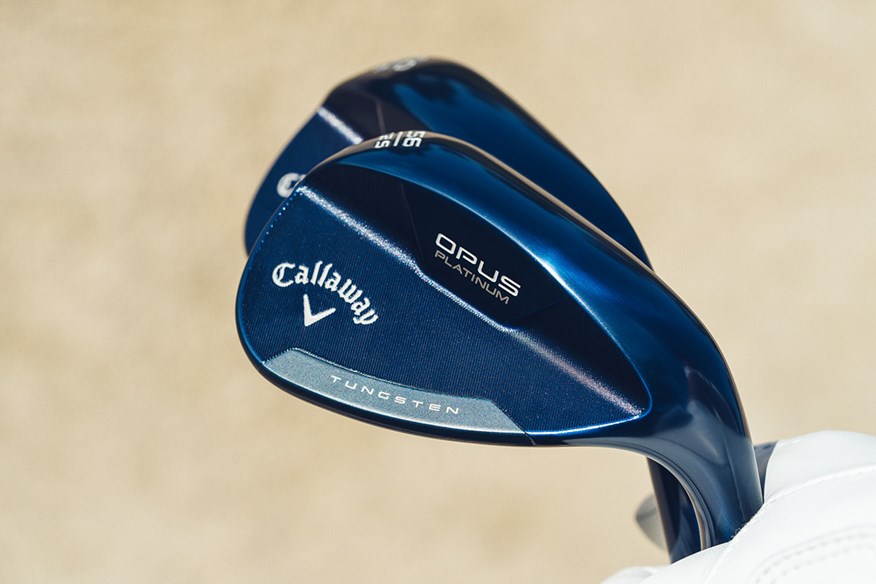
The bonded tungsten (17g of it) used in the Platinum model is in place for exactly that purpose. With carte blanche from senior management to create a product unbound by pricing, the engineers at Callaway utilized the material to lower ball flight in higher-lofted wedges (Platinum is only available in 54º through 60º lofts) to again create more predictable flights from every shot required.
The other area that Platinum sets itself apart is in the use of MiM technology, a first for Callaway. To simplify the idea, MiM (Metal-injection Molding) construction is about injecting a mixture of core metals – in this case, a proprietary blend of materials that Callaway has created – directly into a head shape, allowing for more precise control of design.
The result of this in Opus Platinum is what Callaway refers to as premium feel, more in line with what you might expect from a forged product. The material helps to dampen sound leading to a softer feedback and feel that all players will enjoy.
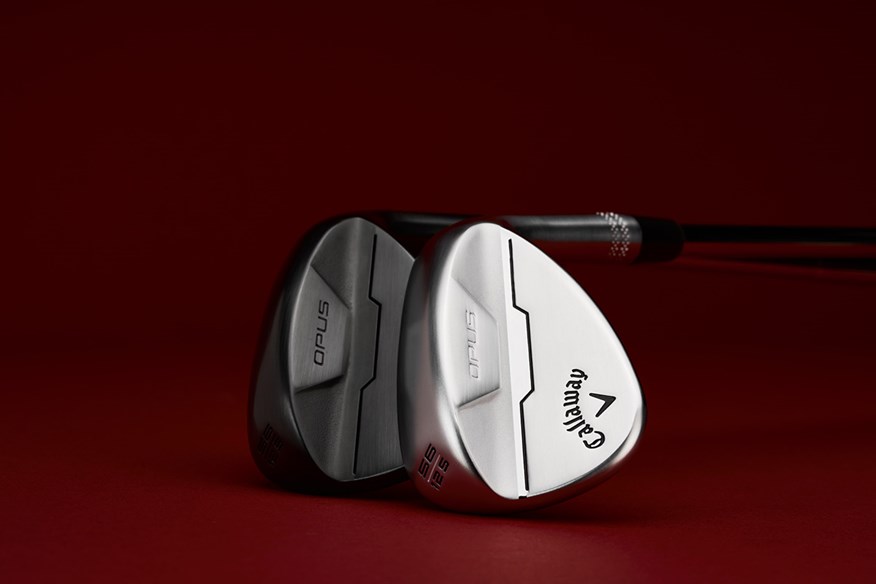
Grinds, finishes, and prices
In the standard Opus head you can choose from two different finishes at retail, with the Brushed Chrome and Black Shadow colorways to pick from. You can also order the Tour Raw finish through Callaway Customs for those who want to add even more spin to their short game.
The stock shafts are the Dynamic Golf Mid 115g Steel and the UST Mamiya Recoil Dart HDC, and the standard grip is the Golf Pride Tour Velvet 360. RRP is £179.
Callaway Customs will also offer a multitude of personalization options, including stamping, custom paint fill, and even a choice of ferrule and shaft bands.
Opus players can also choose from lofts between 48º and 60º with four different grinds that are built to fit your specific golf game:
S-Grind – The neutral Callaway grind, designed for every situation you could come across. Mid-bounce with some sole removed, this grind is better for softer conditions or moderate divot-takers.
W-Grind – The W is a full, wide sole designed for steeper golfers or those who play in the softest conditions. This grind provides more help and forgiveness by way of its higher bounce blocking the sole from getting stuck into the ground.
C-Grind – C is built for maximum greenside versatility. Some relief is provided from the 8º mid-bounce sole, while the grind has been cut to allow the face to be opened up while keeping the leading edge down. Great for shallow players or firmer conditions.
T-Grind – The grind that requires the most precision from its user, the T comes in 6º of bounce and was created with large amounts of sole relief for complete shotmaking. This could work for ultra-shallow swings or very firm conditions.
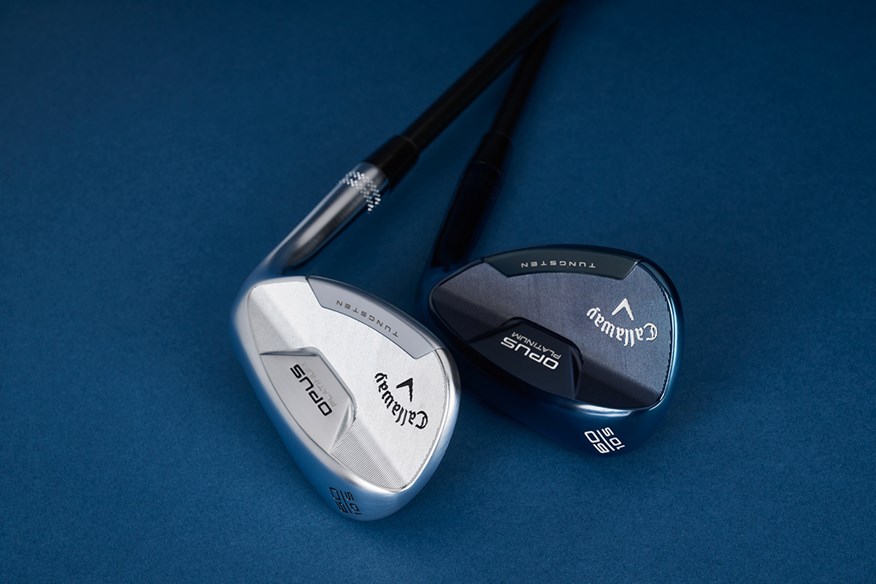
Opus Platinum is available in Platinum Chrome or a very striking Platinum Blue for a different look in the golf bag. The stock shafts are the same as the standard Opus but in a gunmetal and blackout finish, respectively. The stock grip is a Golf Pride MCC in Gray/Black colors. RRP is £229.
Opus Platinum has lofts from 54º to 60º with two grinds available at retail:
S-Grind – As before, built for versatility across every situation or for softer conditions and slightly steeper players.
Z-Grind – The Z is exclusive to the Platinum model and is built as a friendlier low-mid bounce option. Available in 8º and 10º of bounce, this will be a better option for shallow golfers or firm conditions, with relief on the rear and leading edges.
-
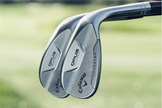 Opus Platinum wedges are the next step for Callaway Golf
Opus Platinum wedges are the next step for Callaway Golf
-
 Callaway Opus Wedges
Callaway Opus Wedges
-
 Callaway Opus Platinum Chrome wedges
Callaway Opus Platinum Chrome wedges
-
 Callaway Opus Wedges Face Address
Callaway Opus Wedges Face Address
-

-
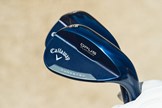 Callaway Opus Platinum Blue Tungsten Shot
Callaway Opus Platinum Blue Tungsten Shot
-
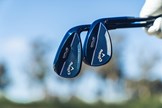
-
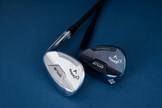 Callaway Opus Platinum Wedges Studio Shot
Callaway Opus Platinum Wedges Studio Shot
-
 Callaway Opus Wedges Black Shadow
Callaway Opus Wedges Black Shadow
-
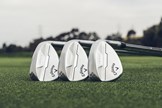 Callaway Opus Brushed Chrome Wedges
Callaway Opus Brushed Chrome Wedges
-
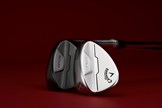 Callaway Opus Wedges Studio Shot
Callaway Opus Wedges Studio Shot
